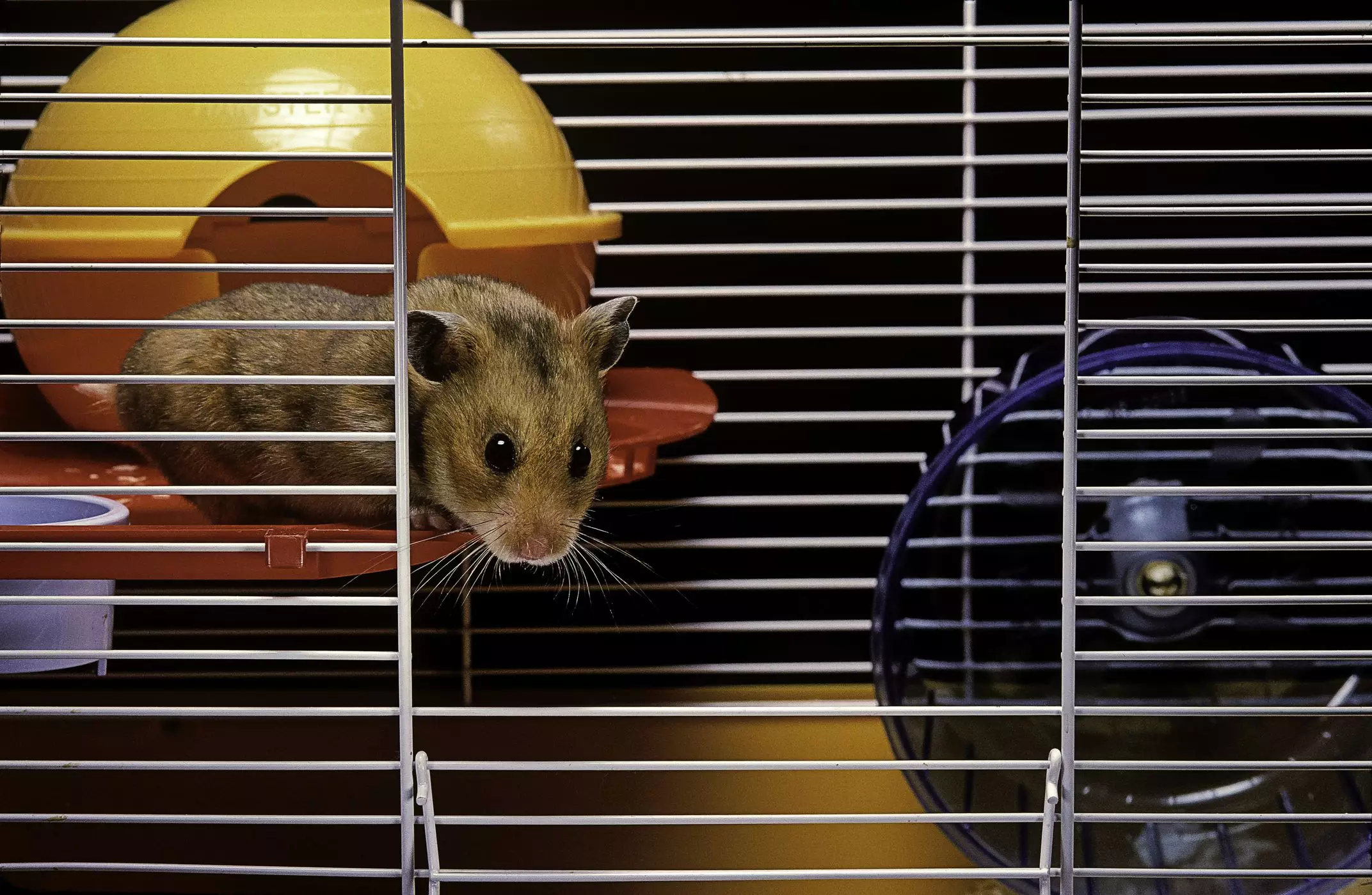When it comes to selecting a pet, many individuals find themselves drawn to the charming Syrian hamster, also known as the golden hamster. Despite their commonly recognized appearance, Syrian hamsters exhibit a wide array of colors and fur lengths, making them as diverse in appearance as they are adorable. Yet, owning one of these lively rodents entails more than just admiration; it requires a commitment to providing an appropriate living environment. A significant factor in ensuring your Syrian hamster’s happiness and health is the cage you select. Here’s a comprehensive guide to help you choose the ideal habitat for your new furry friend.
The Syrian hamster, although the largest breed in the pet hamster family, only measures around 5 to 7 inches in length when fully grown. These little creatures are lively, curious, and social, which, when combined with their nocturnal nature, can make them enigmatic companions. Since they are most active during the night, it can be challenging to engage with them during the day; however, with regular handling, some hamsters can adapt their schedules to be more responsive during daylight hours. Importantly, when interacting with your hamster, it is crucial to respect its sleeping patterns — waking a resting hamster abruptly can lead to stress or even biting.
Selecting the right cage for your Syrian hamster is essential. A well-chosen cage provides a secure, spacious environment that meets your pet’s physical and psychological needs. Contrary to popular belief, not all cages available in pet stores meet the criteria for safety, cleanliness, and adequate space. The main types of cages you might encounter include wire cages, plastic modular cages, and glass aquariums, each presenting unique advantages and drawbacks.
Wire cages, typically featuring a plastic base, are popular because they offer excellent ventilation and are easy to clean. However, it’s essential to ensure that the bar spacing doesn’t allow for escapism; ideally, the bars should not be more than half an inch apart. On the other hand, plastic modular cages entice with their intricate designs, allowing for various compartments and tubes. However, this complexity can complicate cleaning routines, and the enclosed areas tend to restrict air circulation.
Aquariums, while providing exceptional security and chew-proof properties, can be cumbersome due to their weight and lack of ventilation. In terms of cleaning, aquariums can be tricky to manage, requiring substantial effort to maintain a hygienic environment. Therefore, when deliberating over cage styles, it’s essential to weigh these factors based on your hamster’s needs and your maintenance preferences.
Keeping your hamster’s habitat clean is imperative for its well-being. Schedule thorough cleanings at least once a week, replacing old bedding and wiping surfaces with a rodent-safe cleaner. Daily maintenance should involve removing spoiled food and waste; neglecting this can lead to health complications for your pet. A clean cage not only reduces odors but also fosters a healthier environment for your hamster, ensuring it remains happy and active.
Hamsters are energetic animals that crave space to explore and run. Experts suggest a minimum cage size of 24 inches by 12 inches with a height of at least 12 inches. However, a larger cage is always more beneficial. When assessing size, prioritize length over height, as hamsters primarily occupy the ground space rather than climbing. Unfortunately, many commercially available cages marketed for hamsters may not provide adequate room for Syrian hamsters, often designed for smaller dwarf varieties.
In addition to dimensions, the design of your hamster’s cage should allow for various activities. To cater to their instinctual behavior, be sure your cage facilitates burrowing and includes a layer of bedding deep enough for this activity—ideally between 1 to 2 inches. This bedding should be made from shredded paper to avoid potential respiratory issues linked to wood shavings.
Furthermore, incorporating a wheel in the cage is vital for exercise. Ensure the wheel is appropriately sized—around 8 to 12 inches in diameter—to accommodate the larger body of a Syrian hamster. Solid-surfaced wheels are preferable, as they prevent limbs from becoming trapped during play.
Creating a nurturing and secure space for your Syrian hamster involves thoughtful consideration of various factors, including cage type, size, ventilation, and cleanliness. Remember, these creatures thrive in environments that cater to their playful and curious nature. By understanding their needs and providing them with a suitable home, you can enjoy a fulfilling bond with your furry companion for their lifespan of typically two to three years. Careful planning in setting up their habitat can ensure your hamster remains a joyful and healthy addition to your family.

